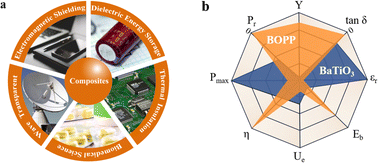Perspective on interface engineering for capacitive energy storage polymer nanodielectrics
Abstract
Polymer nanodielectrics with high breakdown strength (Eb), high energy density (Ue) and low energy loss have great potential to be used as capacitive energy storage materials of high-voltage film capacitors in modern electrical and electronic equipment, such as smart grids, new energy vehicles and pulse powered weapons. Usually, inorganic nanoparticles with high dielectric constant (εr) are added into a high Eb polymer matrix to achieve simultaneously enhanced εr and Eb, thus leading to nanodielectrics with high Ue. However, this strategy was seriously hampered by the uneven distribution of electric fields and inhomogeneous microstructures of the multi-phased nanodielectrics until increasing research work was focused on interface engineering. Recent progress in nanocomposites suggests that interface engineering plays a critical role in regulating the polarization and breakdown behaviors of the nanodielectrics, such as balancing εr and Eb, enhancing Ue and energy discharge efficiency (η). This article highlights the recent advances in the interface engineering of polymer nanodielectrics, including theoretical models, interface engineering strategies, and the latest characterization and fabrication techniques of high performance nanodielectrics. Finally, the challenges and opportunities in the interface engineering of the nanodielectrics in film capacitors are discussed and predicted from a practical point of view.

- This article is part of the themed collections: 2022 PCCP HOT Articles and PCCP Reviews


 Please wait while we load your content...
Please wait while we load your content...